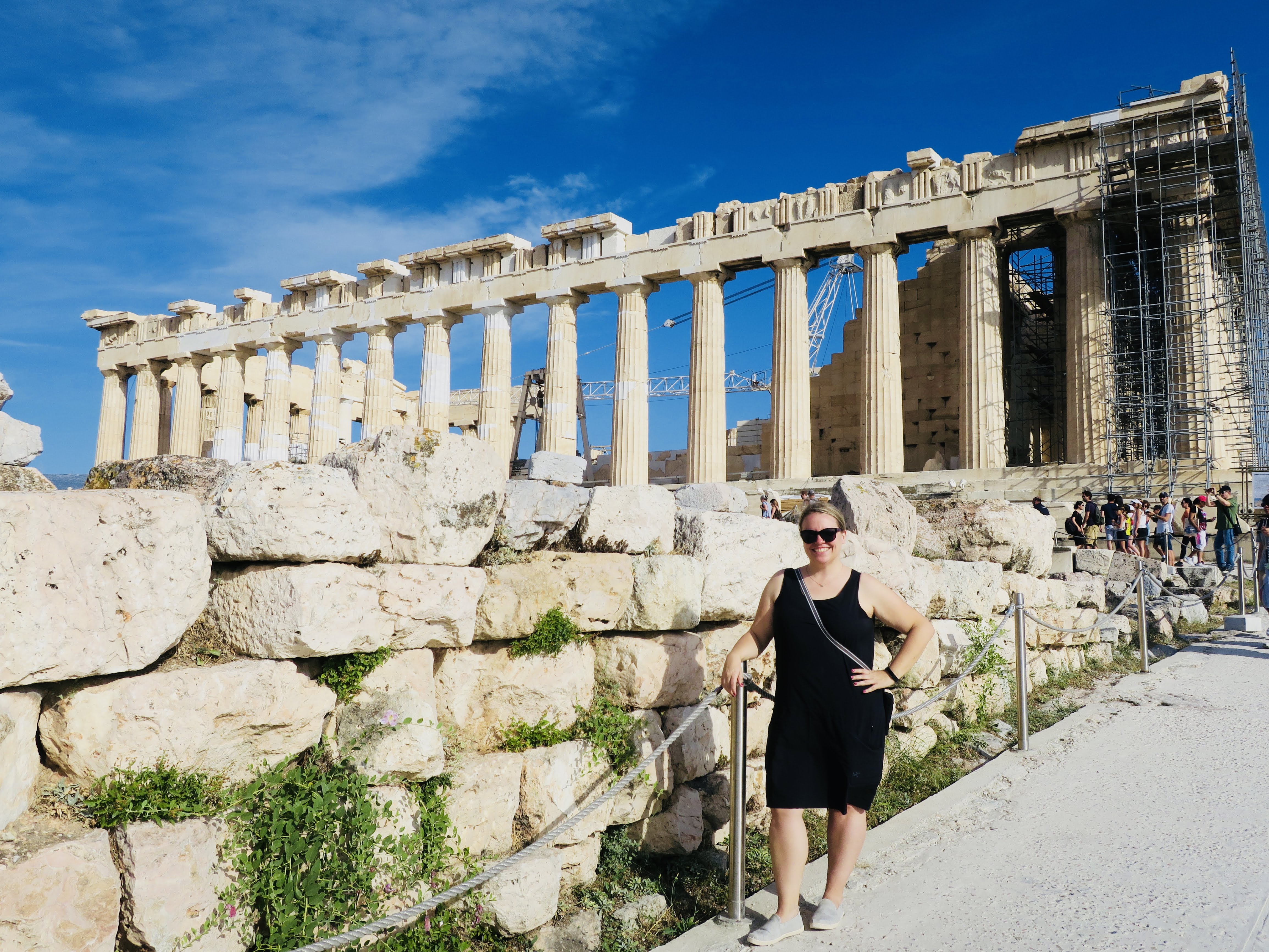Day: 195-197 Location: Athens, Greece Weather: Hot, Hot Hot!
June 15-17, 2018
The first king of Athens, King Cecrops, set out a competition to establish a patron deity for his city state. Athena and Poseidon both desired to be the patron of the Athens, and to settle the rivalry a contest was suggested, the winner of which would come up with the best present to the city. When Poseidon struck the Acropolis with his trident he created a salt-water well, the so-called “sea” of the Erechtheion, which lay inside the temple, and is said to make sounds of waves whenever the wind blows from the south. Athena in her turn thrust her spear to the ground, and a fruitful olive tree appeared. In the end Athena was chosen as the winner, and thus the city was so named in her honour.
 View of Athens from the Acropolis
View of Athens from the Acropolis
Greece has been on most traveller’s ‘must visit’ list for decades now and & has certainly been at the top of mine for as long as I realized other countries existed. In recent years, the country, and Athens in particular, saw its popularity dip due to the government debt crisis of ’07-’08.
Many well meaning people and countless travel forums all had the same advice: Athens is the pits. Yes, the Acropolis is amazing but the city is terrible. Don’t waste your time. ” Never one to let other’s opinions deter me from checking off an item on my travel bucket list, I didn’t hesitate when it came time to book a plane ticket. And the bonus? I was going to be travelling with one of my BFF’s! Besides, the city had been continuously inhabited for the past 5000 years – how could all those Greeks be wrong?
We wasted no time and hit the ground running following our overnight flight. The sun was shining, we were slathered in sunscreen and Ancient Greece was calling. But of course, as most of you probably know by now, an intrepid traveller cannot be sustained on enthusiasm alone, sustenance is required (coffee and gelato was our ambrosia of choice this trip). Obviously our first stop was a local restaurant with an inviting terrance and expansive menu. And not for just any food, but for Greek food (duh, right?!) Caffeinated and fighting jet lag, we decided to start big. Our first stop would be the pinnacle of all Greek visits: the Acropolis!
 The Acropolis of Athens
The Acropolis of Athens
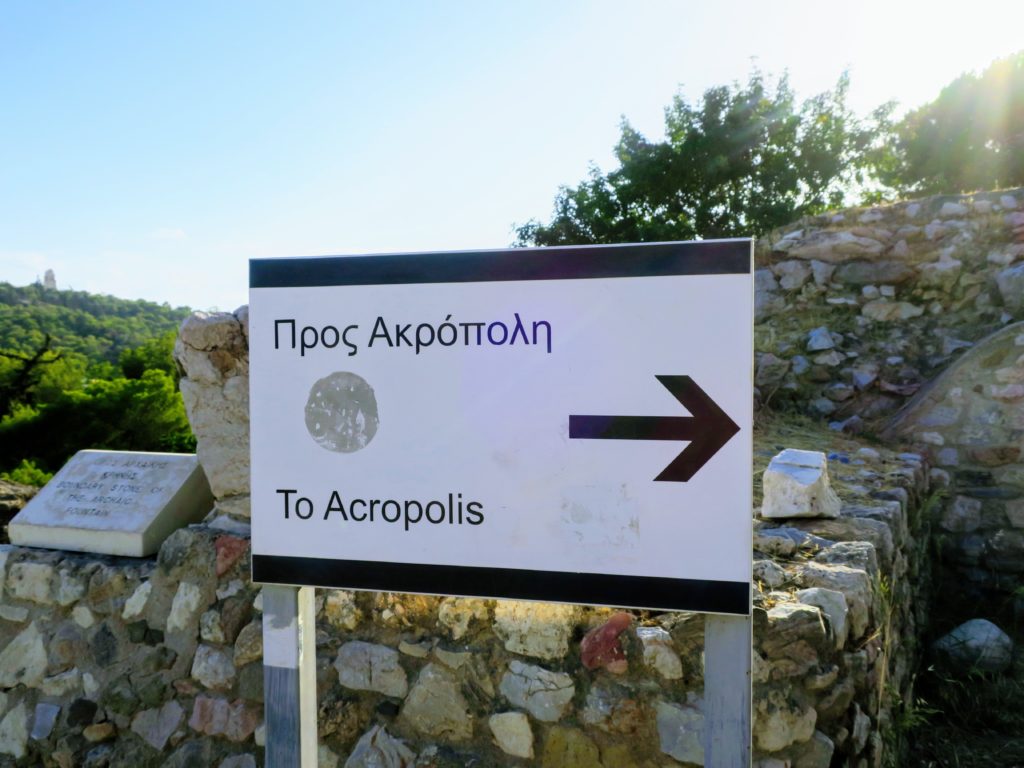 Built atop a rocky hill, the Acropolis dominates the skyline, beckoning travellers back to the beginnings of western civilization. The ruins that remain today date back to the fifth century BC. The 5th century. BC! That means that the Parthenon is 2, 463 years old. And it’s still standing today! It’s hard to wrap your head around these dates as you gaze upon piles of stone and ancient ruins.
Built atop a rocky hill, the Acropolis dominates the skyline, beckoning travellers back to the beginnings of western civilization. The ruins that remain today date back to the fifth century BC. The 5th century. BC! That means that the Parthenon is 2, 463 years old. And it’s still standing today! It’s hard to wrap your head around these dates as you gaze upon piles of stone and ancient ruins.
The most important monument on Acropolis hill is, without a doubt, The Parthenon. Constructed in 440 BC, the Parthenon is a temple dedicated to the goddess Athena, the goddess of goddess of wisdom & war, and the patron of Athens. It is the most important surviving building of Classical Greece and an architectural marvel.
 The majestic Parthenon, perfectly backlight by the sun’s golden glow
The majestic Parthenon, perfectly backlight by the sun’s golden glow
Throughout my childhood, I had often studied Greek mythology. Tales of Heracles and Hades, Perseus, Midas and Apollo, Zeus and his many offspring filled my head and had long captured my imagination. The very spark that ignited my wanderlust was the desire to visit the cradle of Western civilisation, Athens. It was almost indescribable to finally set foot on the ancient soil and gaze upon the marvel that is the Pantheon. While I had been extremely blessed in the last 8 months of travel to witnessed many of the world’s marvellous sites, only a few of them had literally stopped me in my tracks. This was one such moment. With each step I took, I could feel myself following the path of the wondrous Greeks, come to life before my eyes: Pythagoras resting against a column, tracing triangles in the sand; a little bit further, a crowd was forming around Plato, waiting for the day’s lesson; just beyond, Homer sat quietly, baking under the mid day sun, Odysseus falling prey to Calypso and further still, Alexander the Great, triumphantly returning from battle. That is how it felt to be in the presence of this momentus collection of stone!
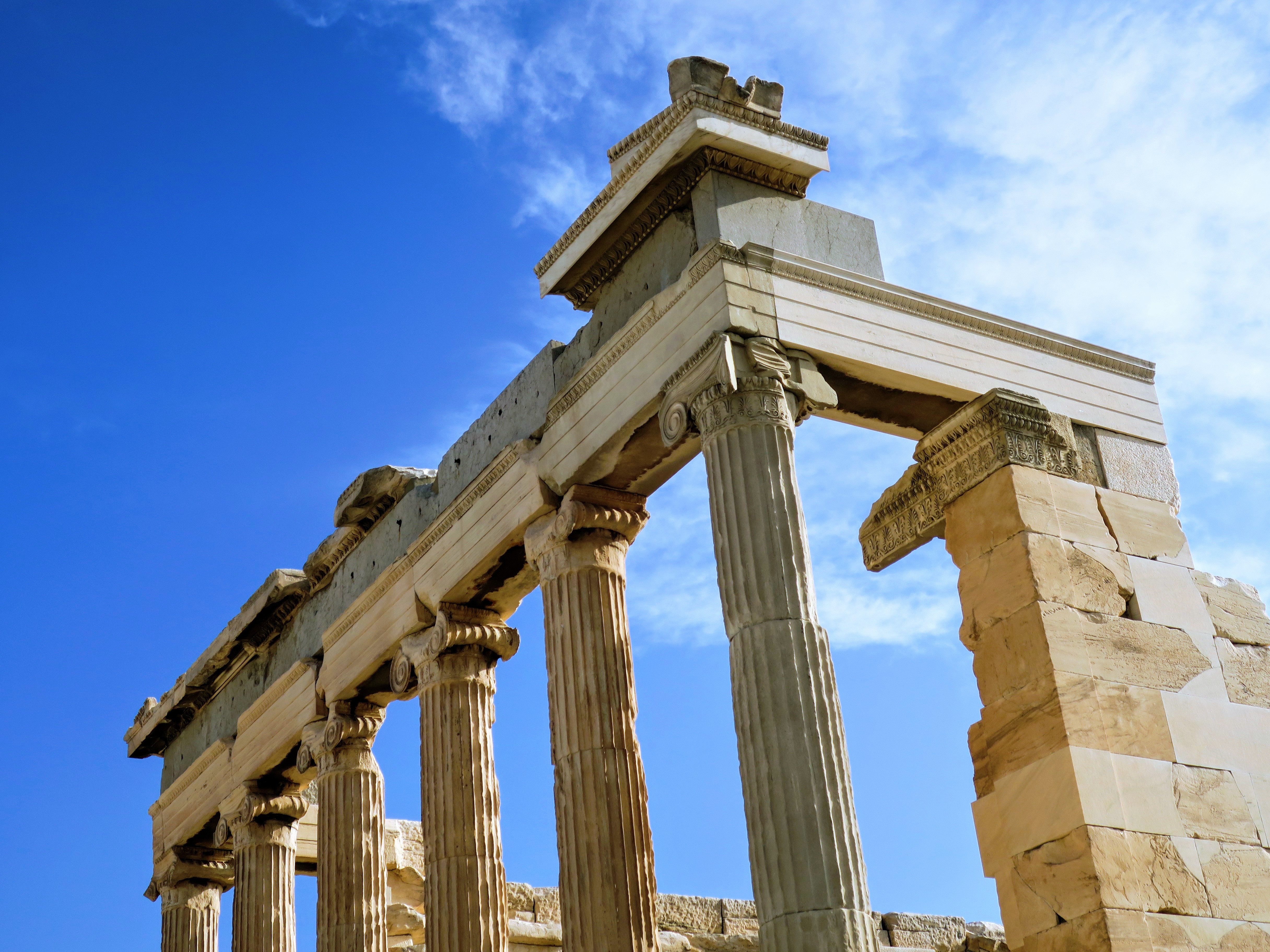
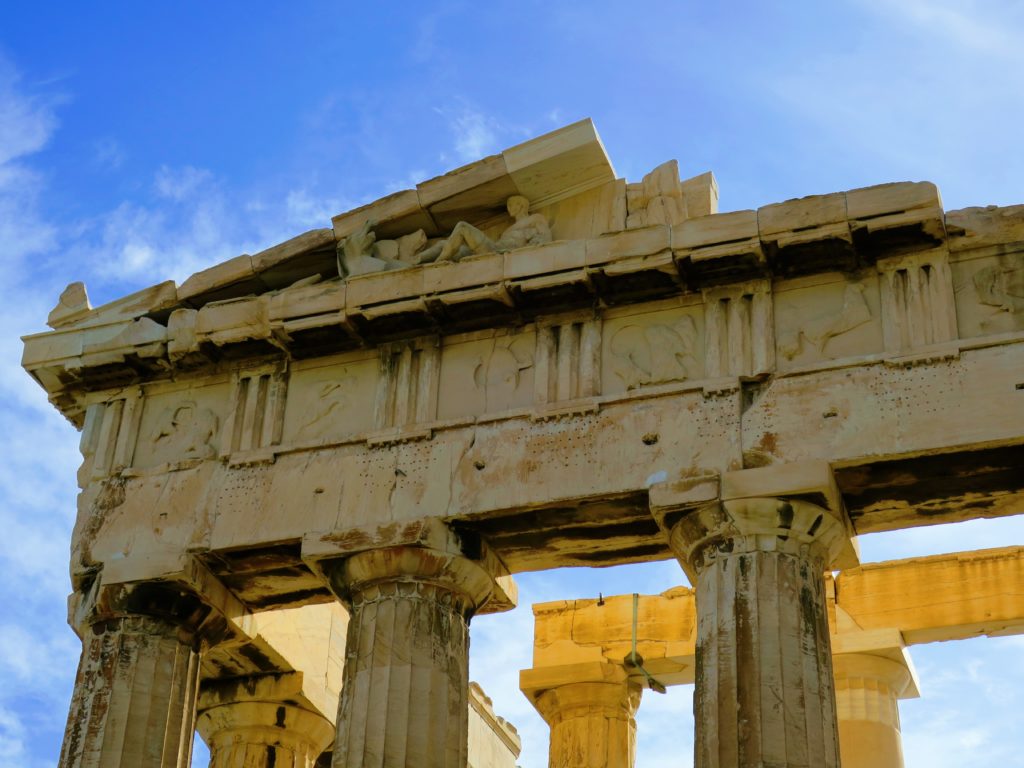
Only a very small number of the sculptures remain onsite (top, right). Most of the surviving sculptures are today in the British Museum in London, having been brought to the British capitol in the early 1800’s by the Earl of Elgin. The move was considered controversial at the time and continues to be a point of contention amongst Greeks to this day.
The remainder of the sculptures were removed years ago for preservation purposes and are now housed across the way in the Acropolis Museum.
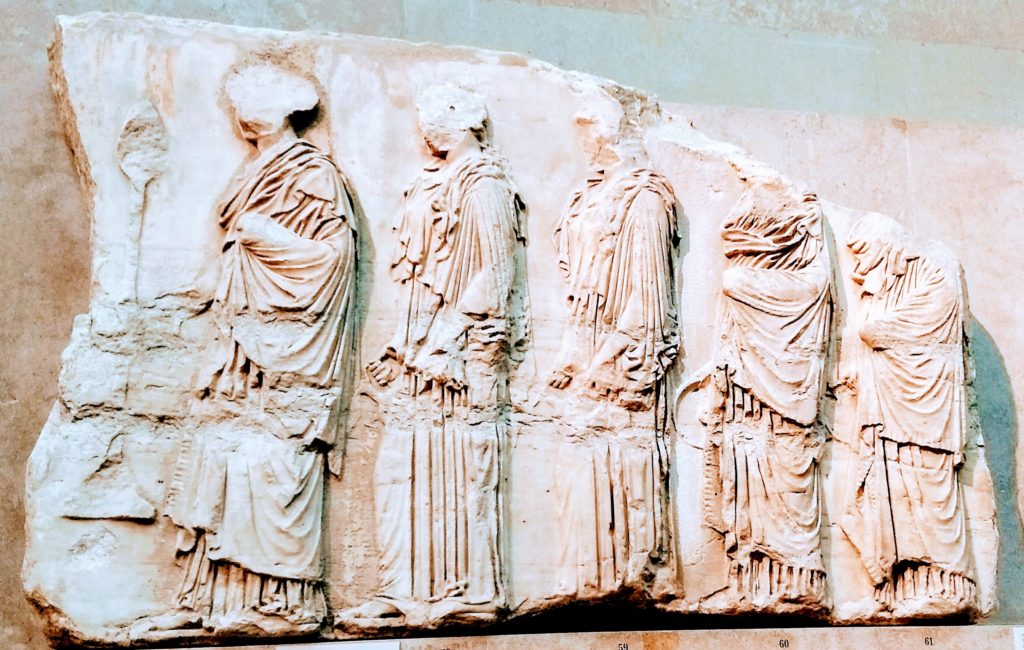
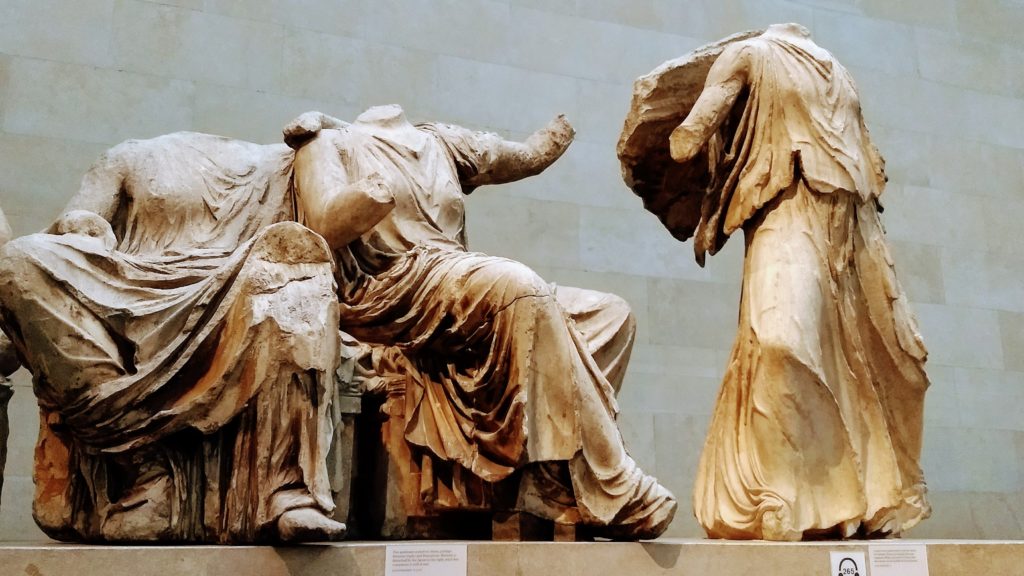 Elgin Marbles (Pantheon sculptures in The British Museum)
Elgin Marbles (Pantheon sculptures in The British Museum)
I had visited the Elgin Marbles at The British Museum at the start of my travels and had thoroughly enjoyed viewing this ancient sculptures. However, walking through the Acropolis Museum and realization how few sculptures were left in Athens and that of those left, none could be considered to be “in good shape”, it was indeed a sad realization that these Greek treasures were indeed so far from home.
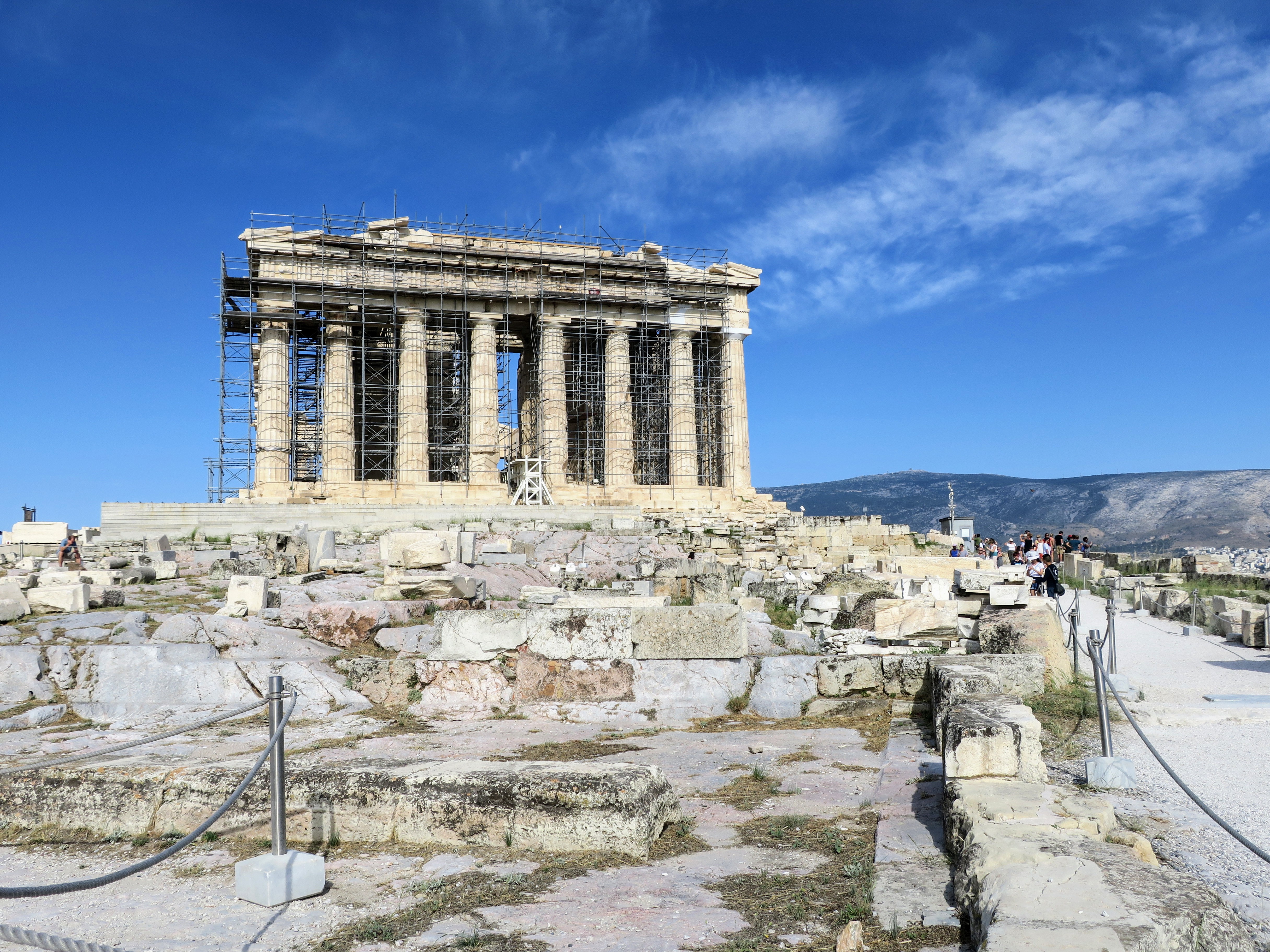 Restauration project expected to be completed in 2020
Restauration project expected to be completed in 2020
The Acropolis has even more to offer than simply the Pantheon – many other temples, statues, theatres and monuments are scattered around the historic site. One of the most sacred is The Erechtheion, the site of the contest between Poseidon and Athena over the Patronage of the city. While the Pantheon is considered a temple, it was not a holy place, unlike the Erechtheion.
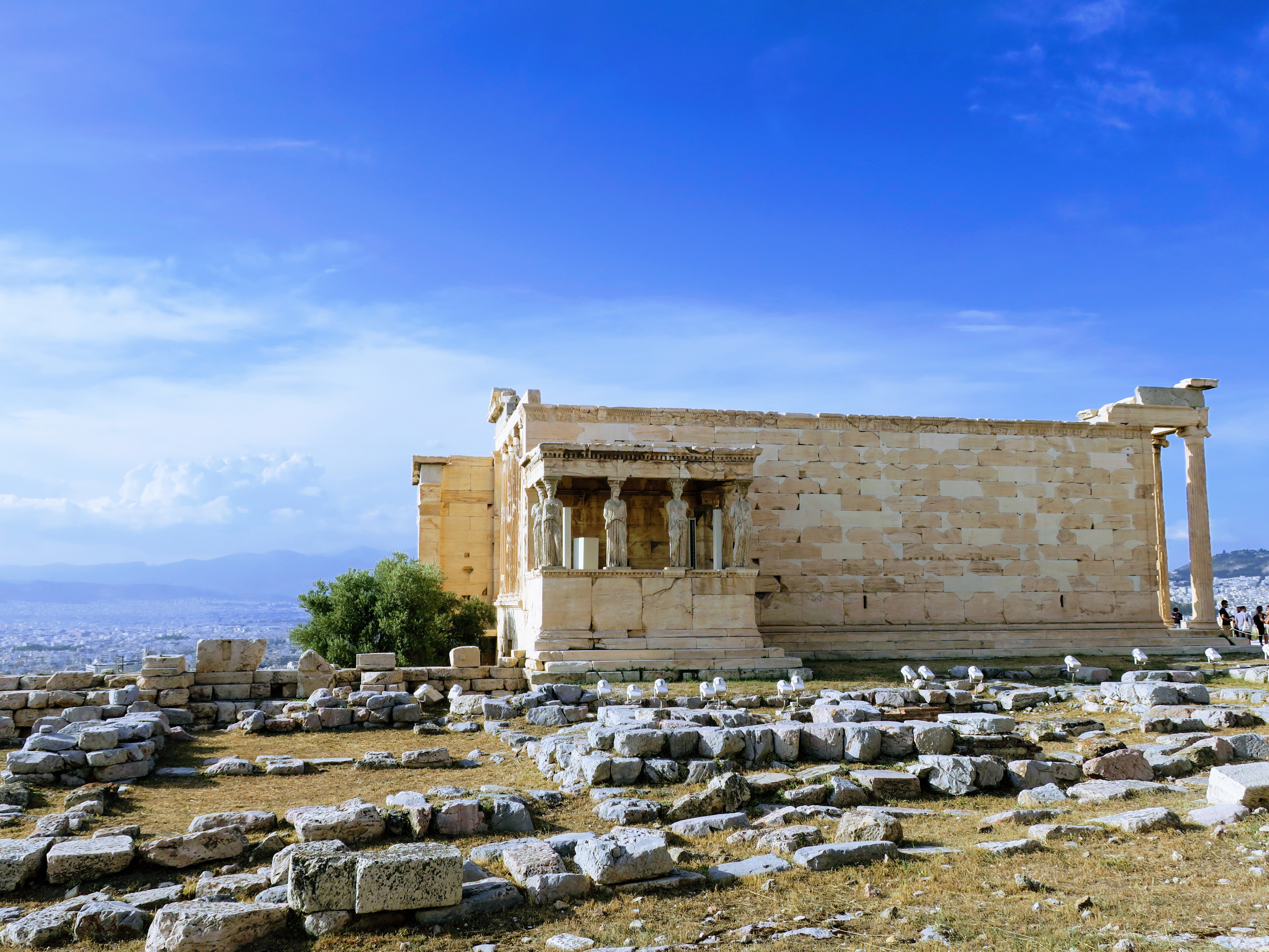
The Erechtheion, constructed in406 BC, remains intact and stands in sharp contrast with the ruins of the Pantheon. It was built from pure white marble from the nearby Mt. Pentelicus. Today, its soft honey colour is attributed to oxidized iron – quite beautiful in the sunlight! Simply put: it’s sooooooooooo pretty!
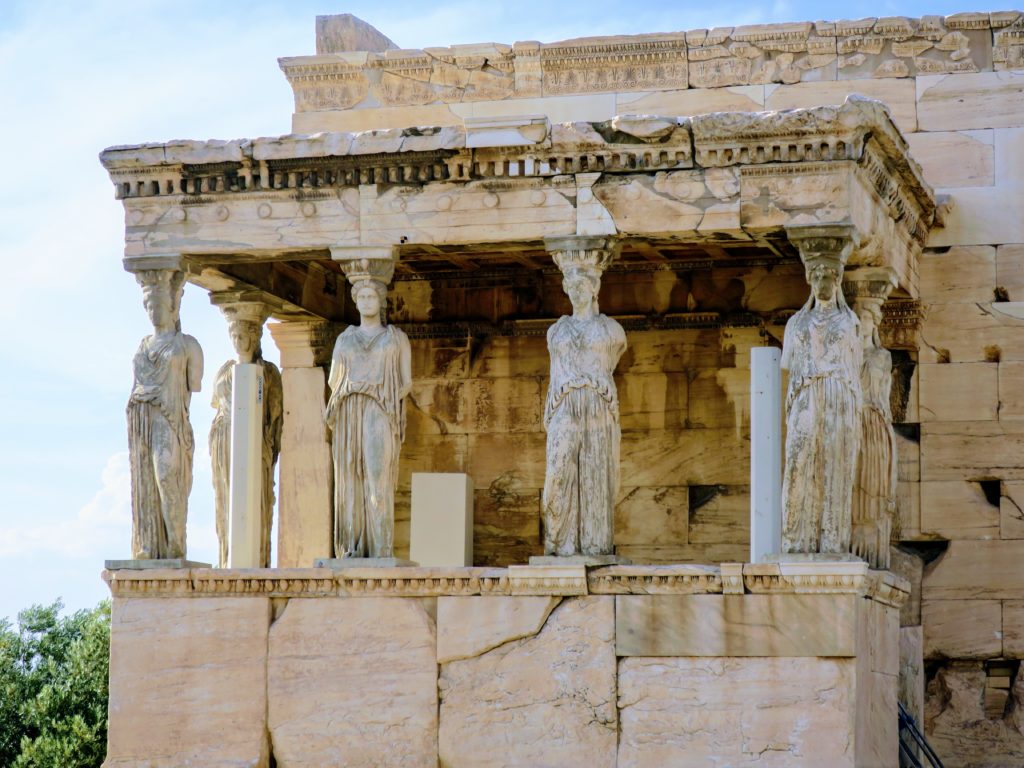 The Porch of the Maidens – 4 of the originals have been places in the Acropolis Museum; the 5th was spirited away by the British, longing to return home.
The Porch of the Maidens – 4 of the originals have been places in the Acropolis Museum; the 5th was spirited away by the British, longing to return home.
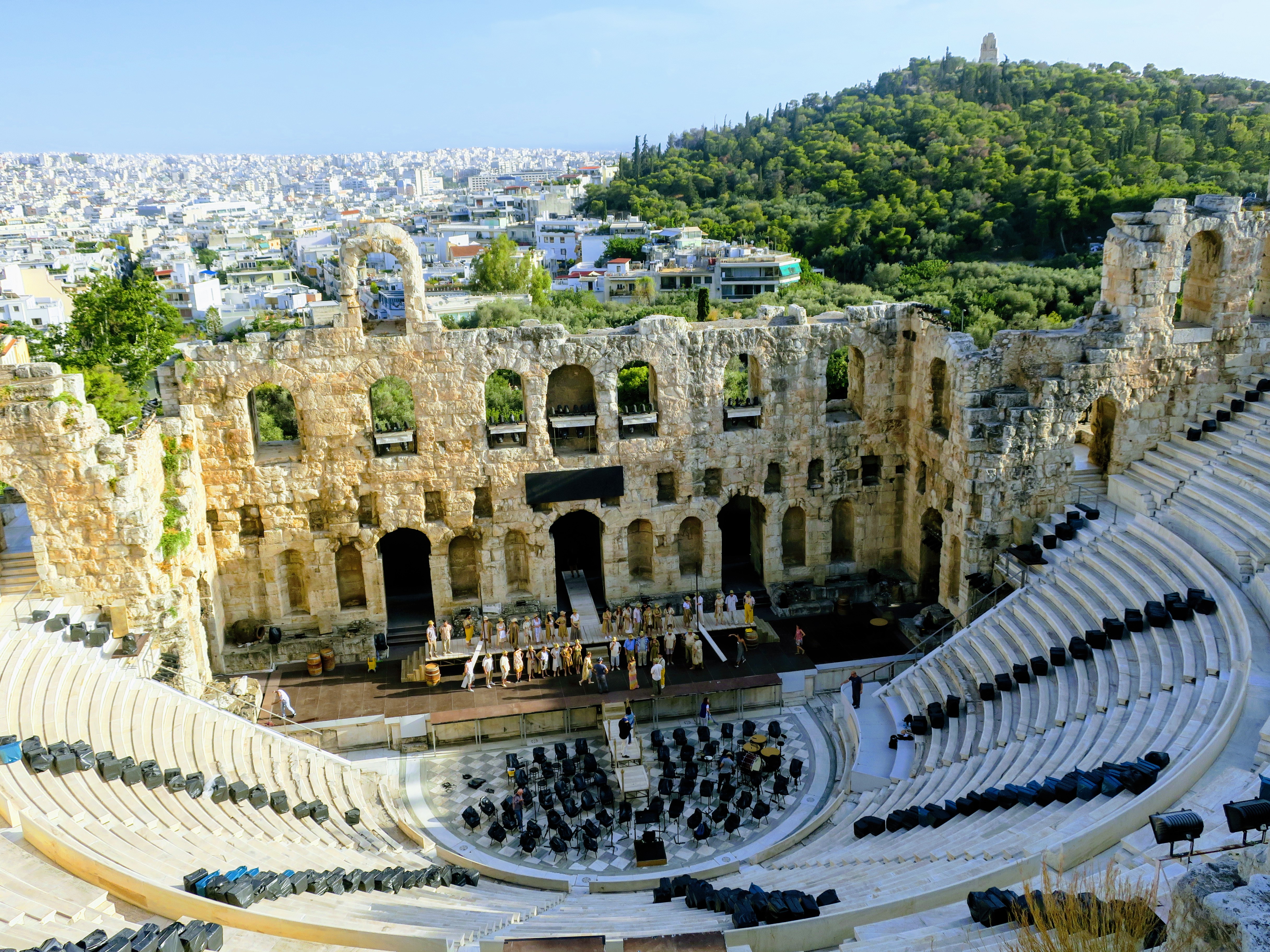 Theatre of Herod
Theatre of Herod
Just below the Acropolis is the Theatre of Herod Atticus, built by the Romans in 161 AD and still used today for concerts!
The ancient Greeks also loved their spectacles and built the world’s first theatre, the Theatre of Dionysius, at the foot of the hill. Dedicated to Dionysus, the god of play, wine and all things indulgent, the theatre could seat as many as 17,000 people – today, only 20 of the original seats survive.
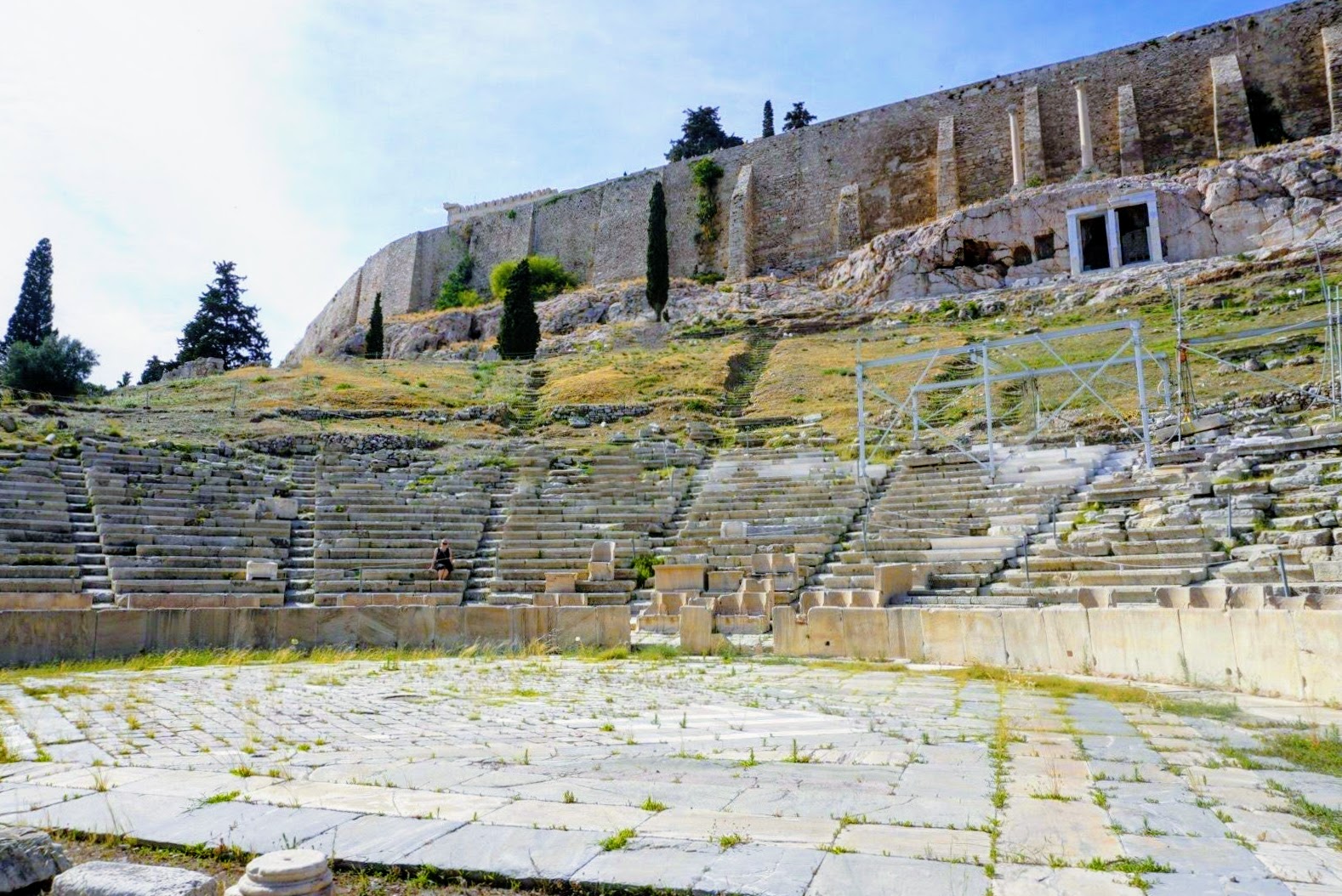 That’s little old me, enjoying a show in the Theatre of Dionysus
That’s little old me, enjoying a show in the Theatre of Dionysus
Greek antiquities aside, Athens has even more to offer visitors! The city is slowly starting to emerge from the economical crisis of 2007-08 and a hub of culture, cuisine and of course, history. Still, conflict and strife continue to dominate the climate – and the news cycle. The most recent clashes occurred as a result of the ‘Macedonia name deal’ – a rather complicated crisis involving the change in the name of Macedonia to North Macedonia. There has been several violent – and deadly- riots in Athens over the years. Once such violent riot (not deadly thank goodness) occurred on June 16th 2018, and we unknowingly walked right into the aftermath.
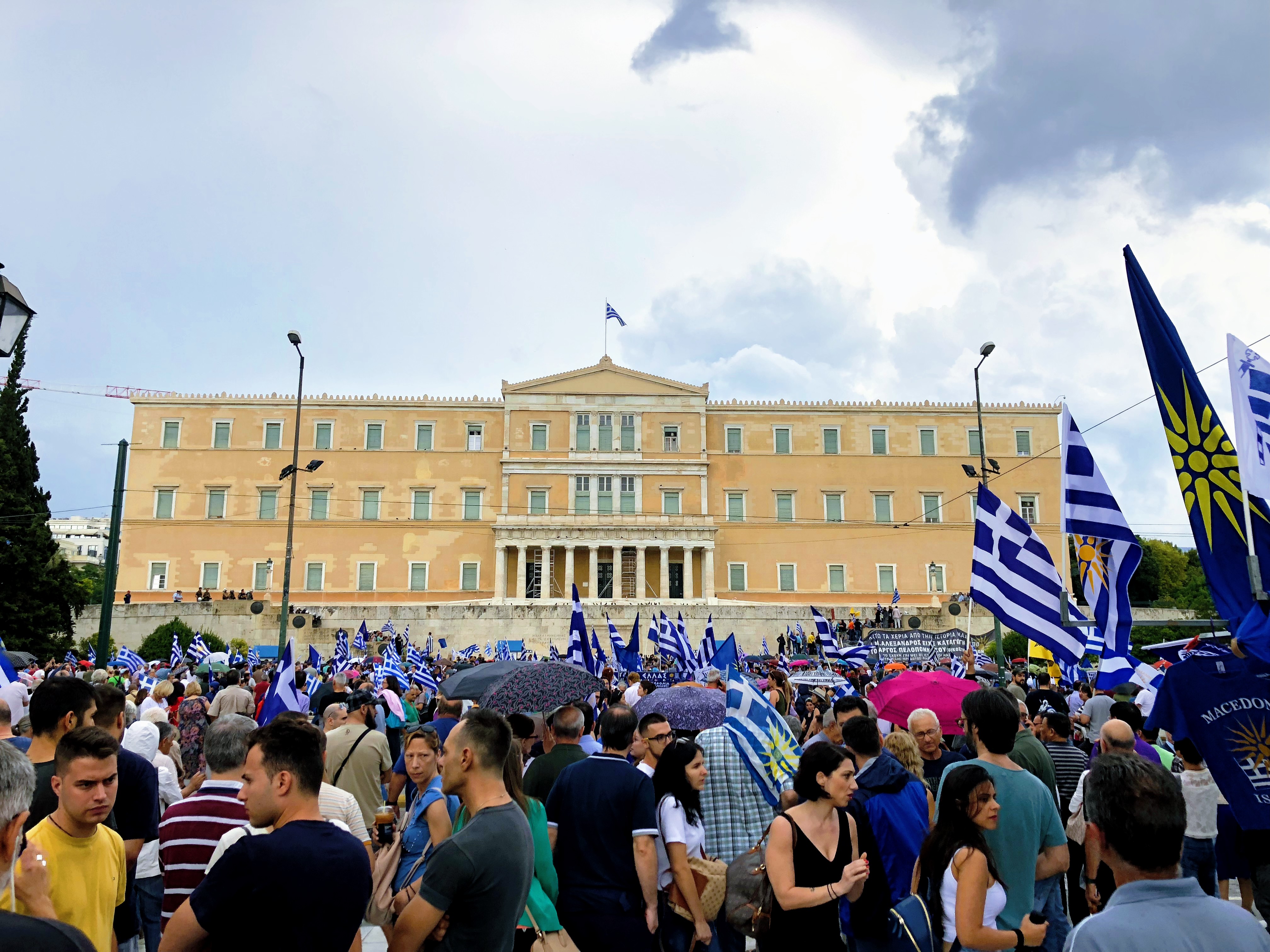
One our last day in Athens, we strolled the different neighbourhoods, exploring Athens like the local. We took the metro and got off at the Parliament building. Hearing lots of noise, we climbed up to investigate. A large crowd was gathered, waving flags and peacefully milling around. A quick Google search told us it wasn’t a national celebration and the crowd was waving Macedonian flags. We were at the back, and seeing as how there wasn’t much to draw attention, we continued merrily on our way. The next day, I received an email from a friend back home inquiring if I was safely away from Athens with a link reporting on the ‘violent riot’ at the Athenian Parliament the day before – the very same one we stumbled upon! And that’s how we discovered we had walked right in the aftermath of a civil protest, tear gas and petrol bombs included.
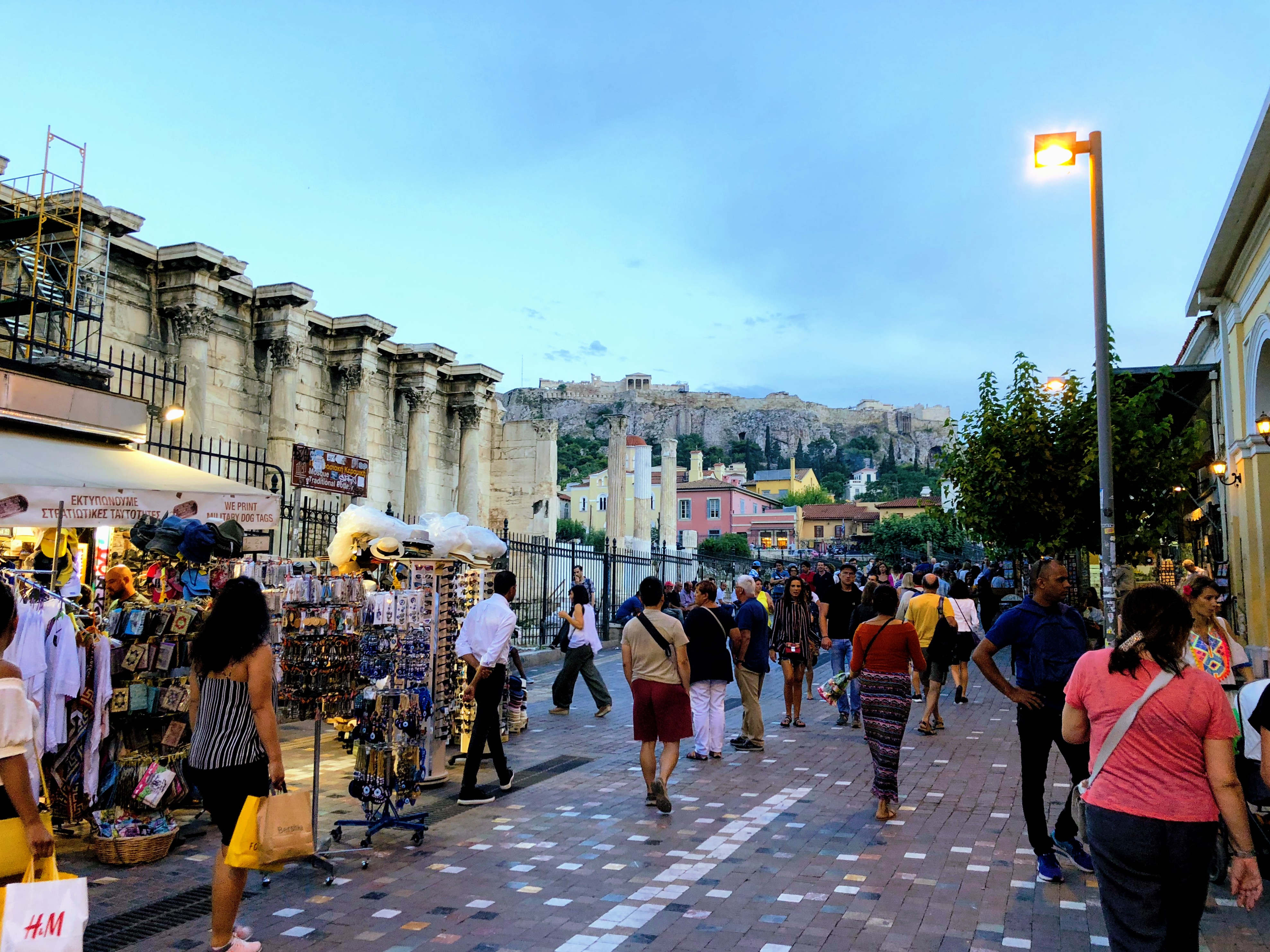
One of the advantages of travelling with your best friend, the very same one who is an ever bigger foodie than you are, is of course sharing in the discovery of authentic Greek cuisine. Luckily, the options in Athens are plentiful and inexpensive.

What better way to indulge in fine delicacies than with a sample platter! Some of the Greek goodies included:
- Dolmades: made with grape leaves, stuffed with a delicious herb rice mix, shaped into little rolls and boiled until wonderfully tender
- Taramosalata (the pink mousse) Fish roe, breadcrumbs, olive oil, lemon juice. Salty goodness!
- Tzatziki (white cream): Dip made from combining yogurt, cucumber, and garlic.
- Saganaki: a deep fried feta cheese delight!
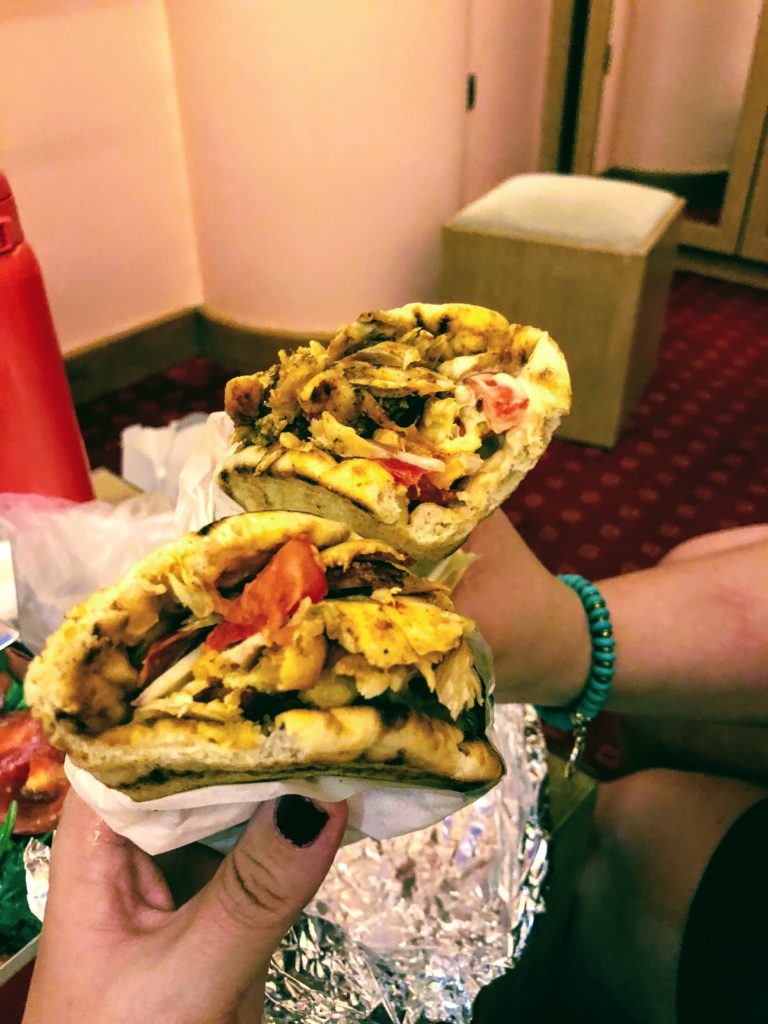

Athens in the summer is hot, over 30 degrees. After pounding the pavement all day, all we wanted to do was grab a quick supper and head back to the comfort of our air conditioned hotel. Luckily, Athens provides the perfect – and delicious- solution chicken gyros! These warm and flavourful pitas are filled with chicken, tomato and tzatziki sauce. And in Greece, strangely enough, they come stuffed with french fries. While clearly not authentic, the strange addition of fries was not a custom we particularly enjoyed; we soon learned to request “without fries” and “extra tzatziki” while we were at it.
The other treat in this capital city is one meant to cool you down and perk you up: coffee frappes! This foamy ice coffee drink is made from instant coffee, sugar, ice cubes and water and is sold for 1 euro! As you can imagine, this quickly became our go to treat for the entire trip. Yes, please!!
